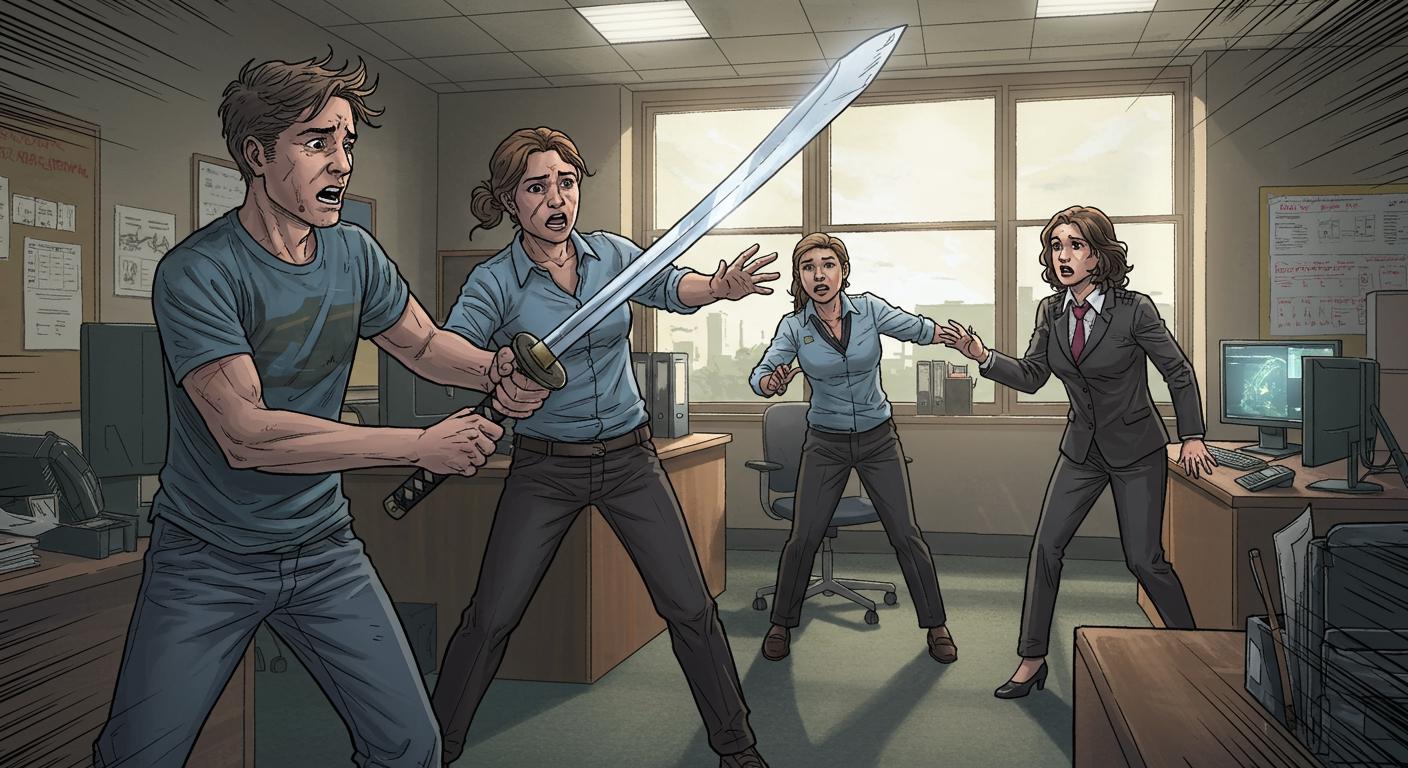There are times when the news manages to combine the surreal with the mundane in a way that would give Franz Kafka pause. Case in point: a Tuesday at The Hague University of Applied Sciences, when a student arrived on campus not with forgotten homework or a coffee, but with a samurai sword—a phrase that still feels more at home in a Renaissance fair than an academic corridor. According to NL Times, citing Omroep West, the events that unfolded were as unsettling as they were bizarre.
When the Unexpected Outpaces the Unthinkable
Court records outlined by NL Times indicate that on May 8, D.D., a 24-year-old student, entered his university brandishing a samurai sword while roughly 2,000 people were present in the building. As described in the proceedings, he threatened multiple staff members, pushing at least one to hide beneath a desk, and left the campus security team scrambling to handle a scenario not typically covered in workplace training modules. University security initially managed to escort D.D. to a secure room, yet the relative calm dissolved quickly when he forced his way into a staff office, sword aloft.
The subsequent police response, as detailed in the court summary, was resolute and resourceful—if oddly reminiscent of an improbable action-comedy script. Officials told the outlet that it required three taser deployments before D.D. showed any reaction, only succumbing after the fourth charge, at which point officers subdued him further with pepper spray.
In the aftermath, D.D. claimed before the court that he had no recollection of the incident, describing it as a “big black hole” tied to a psychotic episode triggered by cannabis use. His defense argued diminished responsibility, emphasizing his altered mental state. However, the judge, referencing evidence that D.D. was aware of his prior adverse reactions to cannabis, determined he “should have known better” and held him partially responsible for his actions.
Sorting Swords from Sanity: The Consequences
As reported in the NL Times article, the court ultimately sentenced D.D. to 120 days in prison, suspending 35 days—though his time in pretrial detention effectively accounts for the majority of this sentence. The judge went a step further by ordering psychological treatment and mandatory drug testing, reflecting ongoing concerns about the relationship between substance use and unpredictable, dangerous behavior. Financial repercussions were also significant: D.D. must pay €1,000 to a staff member directly threatened and €15,000 to the university for damages and related costs.
In a detail highlighted by the outlet, the university has made trauma counseling available for those affected—an acknowledgment that witnessing someone wield a feudal Japanese weapon mid-campus meeting isn’t a standard occupational risk. The record of panic, distress, and logistical confusion is likely to linger far longer than any court sentence.
Wondering Where Security Ends and Folklore Begins
It’s hard not to reflect on the practicalities—when does a campus security guard’s day job shift from lost student IDs and locked doors to medieval weapons management? And what, precisely, do you say in a meeting to follow “let’s review emergency preparedness” after a colleague’s near-brush with a samurai sword?
The incident underscores the unpredictable overlap of mental health, substance-induced psychosis, and public safety. It also throws into relief the limits of institutional preparedness; for all the drills and policy manuals, few people truly anticipate deploying under-the-desk maneuvers in peacetime academia. Even the judge’s reasoning, as documented in NL Times, touches on a broader societal conversation: how much responsibility does one retain when voluntary actions—like substance use—lead knowingly to dangerous outcomes?
From an archival perspective, history is dotted with moments where the extraordinary interrupts the ordinary. But rarely do they involve a student, a sword, and a university thrown into chaos between lectures. The court may have closed the case, but one has to wonder what future safety protocols now quietly include references to “non-firearm bladed weaponry.”
Sometimes the world offers up stories that nearly defy improvement by commentary. This is one such story—a reminder that, try as we might, life occasionally puts a sword at the center of the staff meeting agenda, to thoroughly unpredictable effect.







